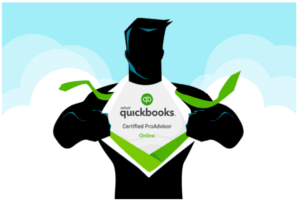Content

The two main types of personal bankruptcy are Chapter 13 and Chapter 7. Filing fees are several hundred dollars, and attorney fees are extra. If you have federal loans (government loans), the Department of Education has different programs that could help.
Accrual method service providers in specific fields—such as law and accounting—can exclude from income the portion of revenue they won’t collect based on prior experience. These companies reduce their revenue rather than writing off specific bad debts. Businesses must stay under a gross receipts threshold to use this method, which comes with its own accounting rules.
Significance of Bad Debt Expense
Never pay a company upfront for promises to help you get relief on paying your mortgage. Learn the signs of a mortgage assistance relief scam and how to avoid them. When you’re done, look for things in your budget you might be able to change so you have more money left over each month. Your goal is to stop adding to your debt, and also to pay down the debt you already have, if you can. You can find information about budgeting and money management online, at your public library, and in bookstores. Check out this worksheet for creating and tweaking your budget.
The percentage of sales method simply takes the total sales for the period and multiplies that number by a percentage. Once again, the percentage is an estimate based on the company’s previous ability to collect receivables. While all of these are possible, the number one reason for bad debt is due to credit sales.
How to claim bad-debt loss deductions that will stand up to IRS scrutiny
Here’s everything you need to know about incorporating your business. All features, services, support, prices, offers, terms and conditions are subject to change without notice. Finally, you can deduct up to $3,000 of any remaining balance from other income. If a balance still remains, you can carry it over to subsequent years. Otherwise, the IRS might consider the exchange to be a gift, particularly if the borrower is a friend or a family member. We’re going to cover how to treat both for your accounting needs.
- Send payment reminders and reach out to late-paying customers.
- The seller can charge the amount of an invoice to the bad debt expense account when it is certain that the invoice will not be paid.
- The IRS also requires that you attach a bad-debt statement to your tax return, explaining the details of the loan you made.
- If a client has closed down their physical premises or becomes unresponsive, collecting debt becomes more time-consuming and expensive.
- Bad debt is accounted for by crediting a contra asset account and debiting a bad expense account, which reduces the accounts receivable.
Hence, the journal entries will also vary due to that treatment. Therefore, it is crucial to understand the accounting entries for both methods separately. Catch https://www.bookstime.com/articles/how-to-make-a-balance-sheet up on CNBC Select’s in-depth coverage of credit cards, banking and money, and follow us on TikTok, Facebook, Instagram and Twitter to stay up to date.
Writing Off Nonbusiness Bad Debts
Knowing bad debt is there can be motivation enough to continue trying to collect on it. Banks never assume they will collect all of the loans they make. This is why generally accepted accounting principles (GAAP) require lending institutions to hold a reserve against expected future bad loans. For a totally worthless debt, you need to file by either seven years from the original return due date or two years from when you paid the tax, whichever is later. However, it is not the same as bad debts, which usually come from the direct write-off method. In the direct write-off method for bad debts, companies record an expense in the income statement.

The accounting methods we mentioned earlier have different ways of dealing with recovered funds. If you don’t want the debt in AR but still need a way to track it, so it isn’t totally written off, you may want to create a separate AR account for each collection. This way, the primary AR balance can run reports without bad debts affecting it, but you can still track each collection account. Regardless of the method chosen, you’ll need a journal entry that balances a bad debt entry. Using the example above, let’s say a company expects that 3% of net sales are not collectible.
The IRS also requires that you attach a bad-debt statement to your tax return, explaining the details of the loan you made. Someone wise once said that you should never lend money to anyone if you expect to be paid back. The Internal Revenue Service (IRS) is sympathetic toward those who lend money—expecting repayment—but subsequently get burned. You can write off bad debts when this happens, even if you’re not a business, but it’s important to know the rules that apply. The direct write-off method involves writing off a bad debt expense directly against the corresponding receivable account. Therefore, under the direct write-off method, a specific dollar amount from a customer account will be written off as a bad debt expense.
This expectation stems from historical dealings with customers. Accounts receivable is an account in the balance sheet that represents the amount customers owe to a company. This account holds all the receivable how to write off bad debt balances which may come from various customers. In some cases, canceled or forgiven debts can be eliminated from your taxable income. Other kinds of debt may be lowered or reduced, but not outright eliminated.
